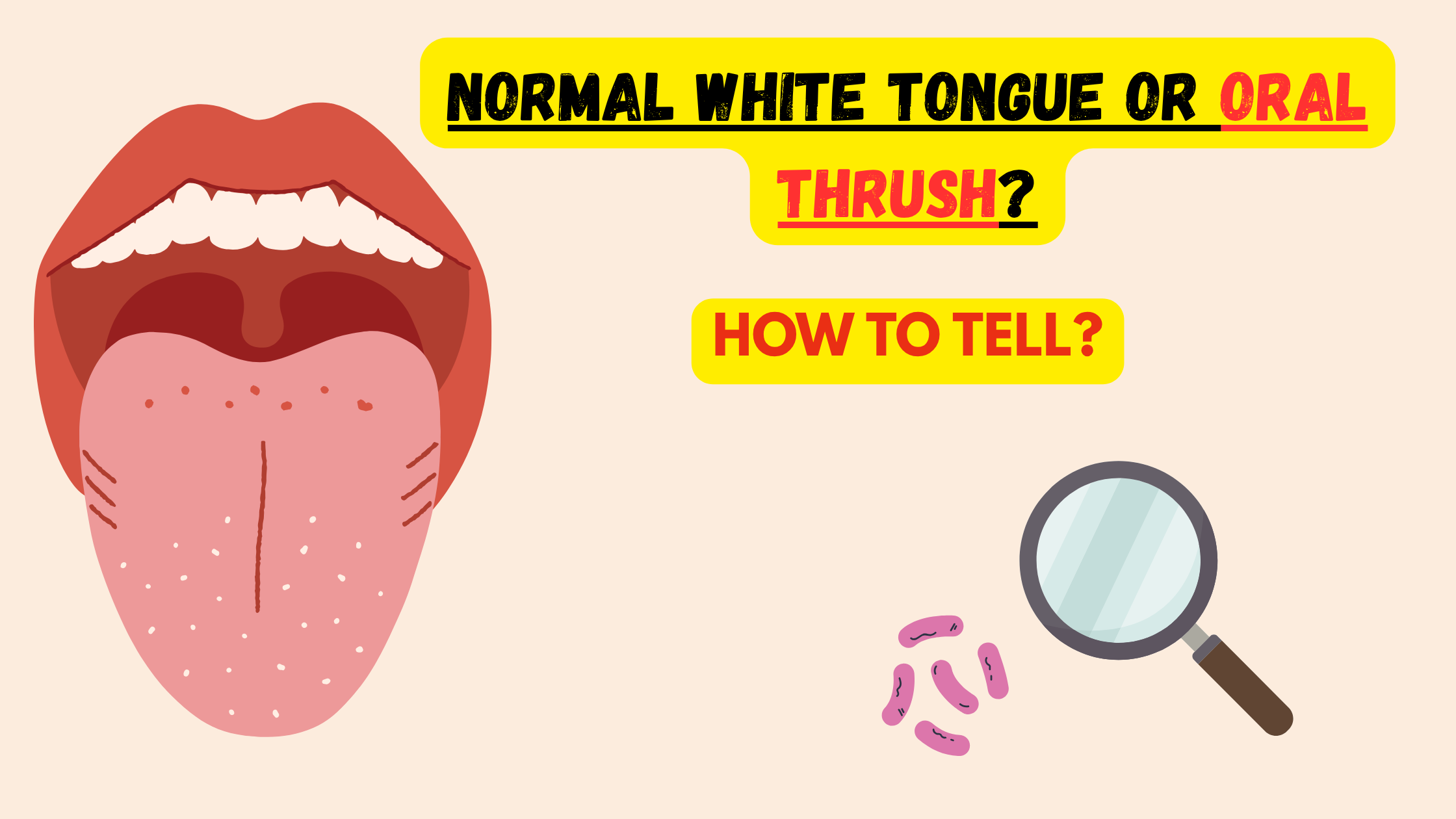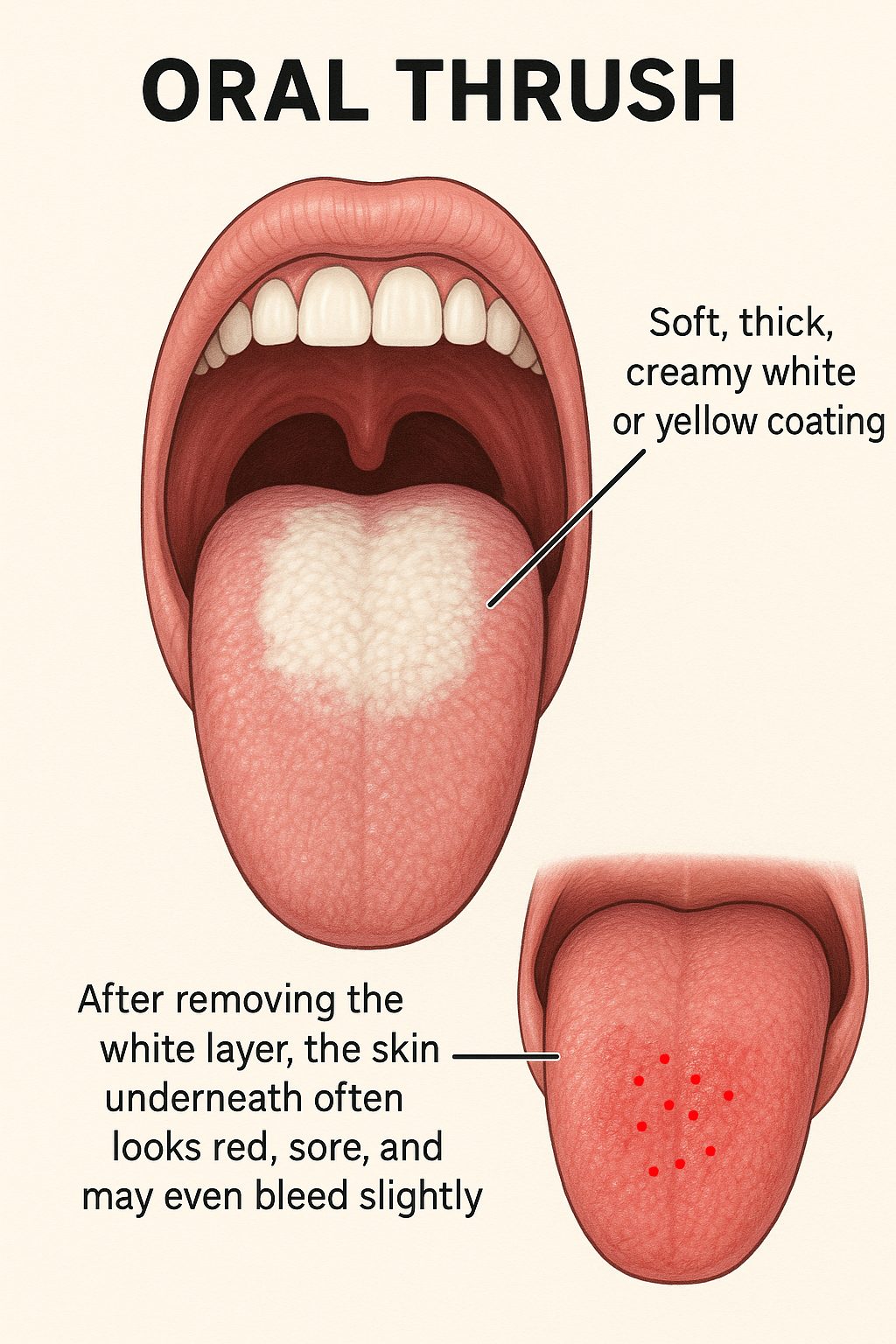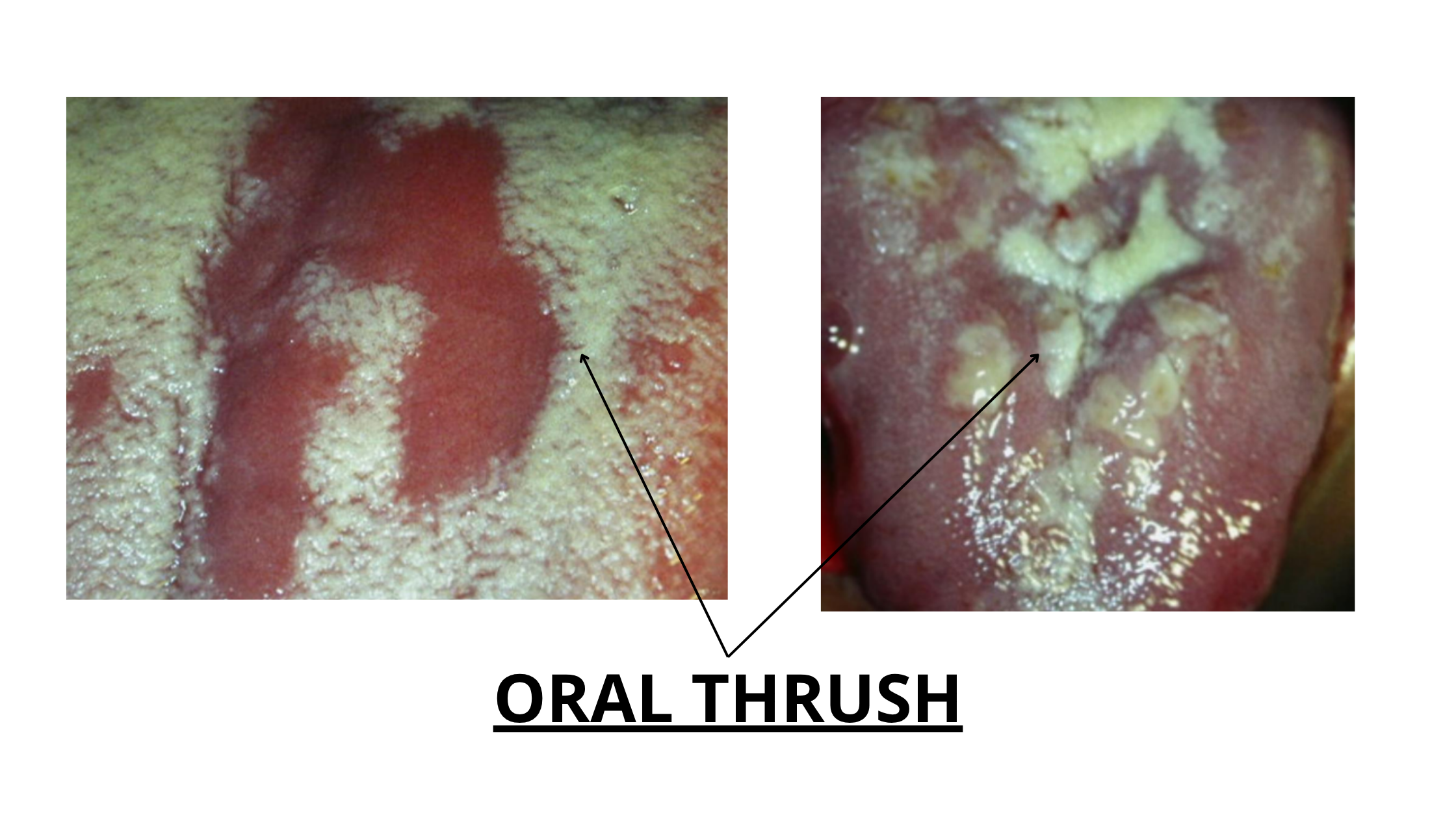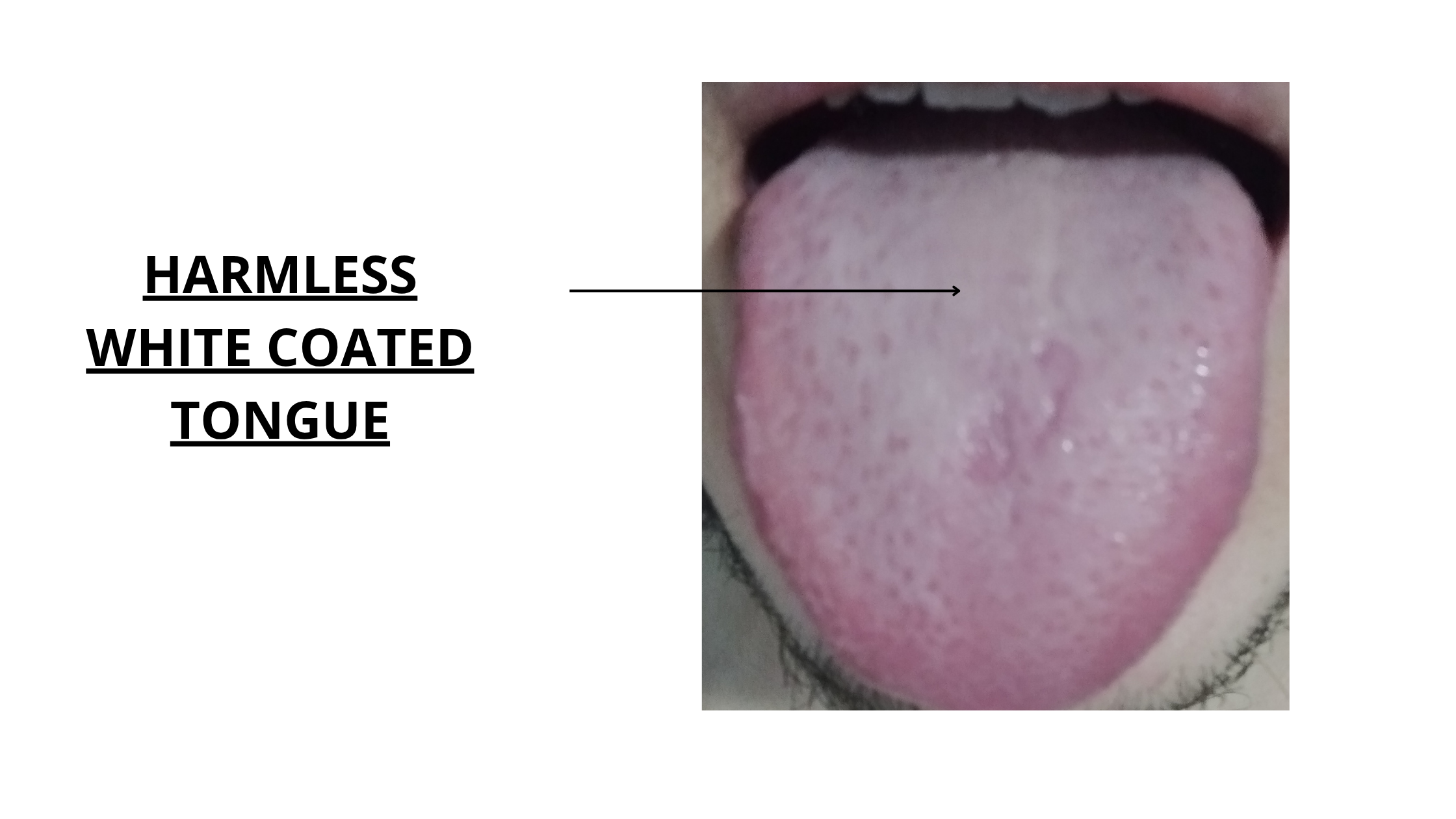White Tongue vs Oral Thrush: How to Tell the Difference
 White coating on the tongue and oral thrush may seem similar—both can cause a thick, white buildup over the tongue. But they’re actually very different conditions with completely different causes.
White coating on the tongue and oral thrush may seem similar—both can cause a thick, white buildup over the tongue. But they’re actually very different conditions with completely different causes.
The common white coating seen in many people is harmless. It’s often just a natural buildup from the shedding of dead skin mixed with food and bacteria on the tongue’s surface.
Oral thrush, on the other hand, is a fungal infection caused by yeast. It appears as a white, creamy layer on the tongue. But unlike the normal white coating, it often comes with other symptoms.
In this article, we’ll break down the key differences between a normal white coating and oral thrush, so you can better understand what’s going on and when to take action.
In this article:
1. Key Differences Between “Normal” White Tongue and Oral Thrush
2. How Can Oral Thrush Cause a White Tongue Coating?
3. When Is a White Tongue Coating Considered Harmless?
4. Who Is Most Likely to Get Oral Thrush?
5. Is It Oral Thrush or Just a Normal White Tongue? The Verdict
Key Differences Between “Normal” White Tongue and Oral Thrush
White Tongue Is Common — Oral Thrush Is Not
Most people have experienced a white coating on the tongue at some point. It’s usually harmless and happens naturally when the tongue's outer layer sheds or flakes off. If you don’t clean your tongue well, the layer can thicken, trapping more bacteria and debris and showing up as a white coating.
Oral thrush, on the other hand, is much less common in healthy individuals. It most often occurs when the immune system is weakened or not working properly, making it easier for yeast to grow and cause infection.
White Tongue Is Symptom-Free — Oral Thrush Is Not
Another key difference is that a normal white tongue coating usually doesn’t come with any symptoms. There’s no pain, redness, or discomfort. Other than the white film—and sometimes bad breath—the mouth remains healthy.
Oral thrush, however, is a fungal infection. Along with the thick, creamy white coating, it can cause a burning sensation, an odd or metallic taste, redness, and even slight bleeding.
One of the clearest ways to tell them apart is by gently scraping the white coating:
- With oral thrush, the area underneath often looks red, inflamed, or irritated.
- With a normal white coating, the tongue underneath appears pink and healthy.

White Tongue Coating Clears Up Quickly — Oral Thrush Usually Needs Treatment
In most cases, a white tongue coating goes away on its own once you start brushing your tongue regularly and improving your oral hygiene.
Oral thrush, on the other hand, usually requires treatment. While it can sometimes go away on its own, it often needs topical antifungal medication to clear up. If left untreated, it can become more persistent, turn into a chronic condition, or even spread to other parts of the mouth and throat.
How Can Oral Thrush Cause a White Tongue Coating?
Oral thrush is the most common fungal infection in the mouth. It’s caused by the abnormal overgrowth of a fungus (or yeast) called Candida albicans.Here’s the thing: many people naturally have Candida albicans in their mouths. In healthy conditions, it stays harmless and lives in balance with other microbes, causing no problems.
But when something disrupts that balance—like poor oral hygiene or a weakened immune system—Candida can overgrow. When that happens, it starts to damage the soft tissues of the mouth, leading to an infection known as oral thrush.
One of the telltale signs of oral thrush is a soft, thick, creamy white or yellow coating that can be easily wiped off with gentle scraping. While it can appear anywhere in the mouth, the tongue is the most commonly affected area.
Another key feature: after removing the white layer, the skin underneath often looks red, sore, and may even bleed slightly (as shown in the picture below).

When Is a White Tongue Coating Considered Harmless?
A healthy tongue naturally has a light white coating. This is due to the normal shedding of dead cells on the tongue’s surface—similar to how your skin renews itself. As old cells die off, they detach and make way for new ones.Usually, simple actions like chewing food or cleaning your tongue help remove this layer and keep it from building up.
But when the dead skin isn’t properly removed—because of poor hygiene or other factors—it can build up over time.
This layer can get trapped on the tongue’s rough surface along with food particles and bacteria, forming a thick white coating. It can even change color, turning yellow or brown if it mixes with things like coffee, tea, or tobacco.
And since most odor-causing bacteria live on the tongue, people with a coated tongue often complain of bad breath.
Unlike oral thrush, this type of white tongue is harmless, common, and not caused by an infection.
Anyone can develop a white coating from time to time, but it’s more likely in the following situations:
- You don’t brush or clean your tongue regularly.
- Your diet is mostly soft foods. Chewing harder foods helps slough off dead cells, while soft foods don’t.
- You have a dry mouth, which reduces saliva. Saliva helps wash away debris and dead cells.
- You’re sick or have a fever, which may lower saliva flow and reduce how much you eat or chew.

Who Is Most Likely to Get Oral Thrush?
Oral thrush is not something that just anyone gets. In fact, it’s relatively uncommon in people with a healthy immune system.As mentioned earlier, for a fungal infection like thrush to take hold, the body’s defenses need to be weakened in some way. That's why it's more common in infants and the elderly, who have a weaker immune response than healthy adults.
Some situations where oral thrush is more likely to occur include:
- Chronic illnesses like diabetes or HIV/AIDS
- Long-term use of corticosteroids
- Strong or prolonged antibiotic use, which can disrupt the balance of bacteria in the mouth
- Dry mouth (xerostomia)
- Poor oral hygiene habits
- Wearing an ill-fitting denture
So, if you’re a healthy individual with good oral hygiene, it’s unlikely that you have—or will ever develop—oral thrush.
Is It Oral Thrush or Just a Normal White Tongue? The Verdict
To wrap it up: if you’re a healthy person with decent oral hygiene, chances are your white tongue is simply part of the natural shedding process. In most cases, gently brushing or cleaning your tongue is enough to get rid of it.However, if the white coating comes along with other unusual symptoms—like a burning sensation, a bad taste in the mouth, redness, bleeding, or discomfort—it could be something more. And if you also have risk factors like dry mouth, a chronic illness, or have recently taken antibiotics, oral thrush should be highly suspected.
Treatment for oral thrush usually involves using topical antifungal medications—such as gels, creams, or rinses—for several days until the symptoms improve.